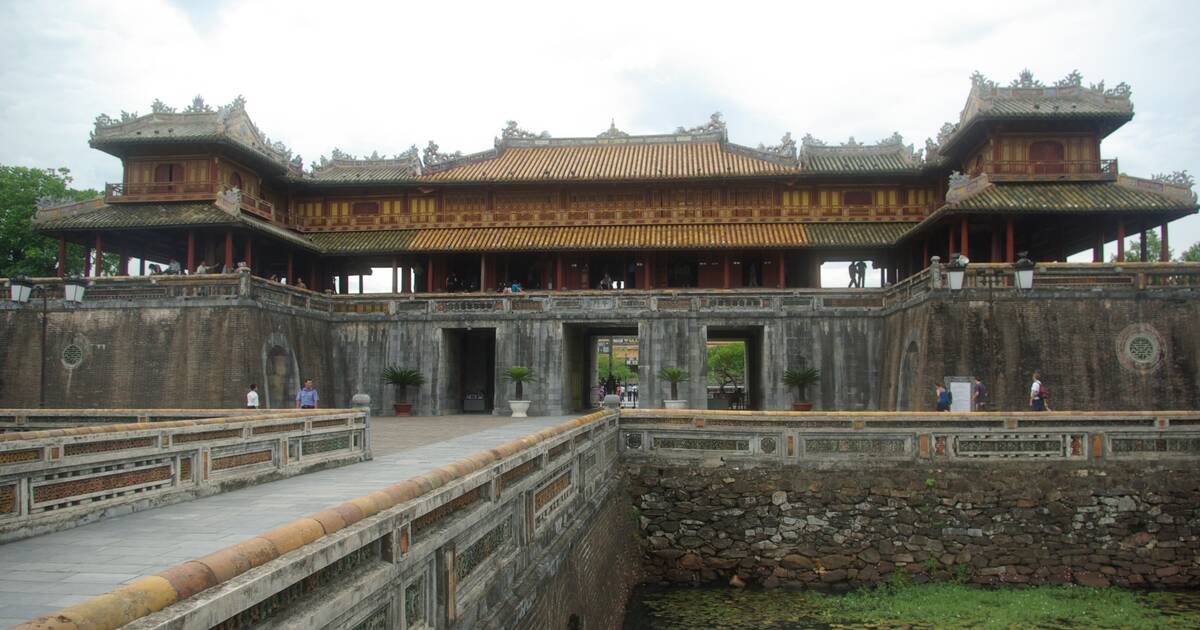Hue Monuments: Reliving the Majesty of Vietnam’s Imperial City
Nestled along the banks of the Perfume River in central Vietnam, Hue is a city steeped in history and cultural heritage. At the heart of Hue lies the Hue Monuments Complex, a UNESCO World Heritage site that showcases the grandeur and majesty of the Nguyen Dynasty, Vietnam’s last imperial rulers. The Hue Monuments offer a captivating journey into the country’s rich past, with its ancient citadel, royal tombs, and imperial palaces. Let’s explore the Hue Monuments and discover the allure of this historic city.

- The Imperial City: The Imperial City, also known as the Citadel, is the centerpiece of the Hue Monuments Complex. Built in the early 19th century, it served as the political and administrative hub of the Nguyen Dynasty. Surrounded by a 6-meter high defensive wall and a moat, the Imperial City houses numerous palaces, halls, and temples that reflect the grandeur of the imperial court. Visitors can stroll through its magnificent gates, explore the various pavilions, and marvel at the intricate architectural details that showcase the unique blend of Vietnamese and Chinese influences.
- The Forbidden Purple City: Located within the Imperial City is the Forbidden Purple City, which was once the private residence of the royal family. Accessible only to the emperor, his family, and selected officials, this inner sanctum was heavily damaged during the Vietnam War but has been partially restored. Today, visitors can explore the remnants of the Forbidden Purple City and imagine the opulence and secrecy that surrounded the lives of the Nguyen Dynasty rulers.
- Royal Tombs: Scattered along the outskirts of Hue are several royal tombs, each dedicated to an emperor of the Nguyen Dynasty. These tombs are elaborate complexes that serve as the final resting places of the emperors and their consorts. The tombs are known for their stunning architecture, serene gardens, and intricate details. Some of the notable tombs include the Tomb of Minh Mang, the Tomb of Khai Dinh, and the Tomb of Tu Duc. Each tomb reflects the personality and tastes of the emperor it was built for and offers a glimpse into the imperial lifestyle and traditions.
- Thien Mu Pagoda: Situated on the banks of the Perfume River, Thien Mu Pagoda is one of the most iconic landmarks in Hue. Built in the 17th century, the pagoda is known for its elegant seven-story tower, called the Phuoc Duyen Tower, which offers panoramic views of the surrounding area. The pagoda also houses several other buildings, including a beautiful main hall and a bell tower. Visitors can explore the serene grounds, admire the intricate architecture, and learn about the pagoda’s historical and religious significance.
- Traditional Music and Dance Performances: To enhance your experience of the Hue Monuments, be sure to catch a traditional music and dance performance. Hue is renowned for its royal court music, which was once exclusively performed for the imperial court. Today, visitors can enjoy mesmerizing performances that showcase the unique melodies and graceful movements of this traditional art form. These performances can be found at various venues in the city, including the Hue Royal Palace and the Hue Traditional Arts Theater.
- Practical Information:
- Opening Hours: The Hue Monuments Complex is open daily from 7:00 am to 5:30 pm.
- Entrance Fee: There is an entrance fee to visit the Hue Monuments Complex, with separate fees for the Imperial City, individual royal tombs, and Thien Mu Pagoda.
- Getting Around: The Hue Monuments Complex is quite extensive, so it’s advisable to allocate sufficient time and wear comfortable shoes for walking. Bicycles and electric vehicles are available for rent within the complex.
- Guided Tours: To gain a deeper understanding of the historical and cultural significance of the Hue Monuments, consider joining a guided tour or hiring a knowledgeable local guide.
Conclusion || Hue Monuments
In conclusion, the Hue Monuments stand as a testament to Vietnam’s rich imperial past and offer a captivating journey into the country’s cultural heritage. From the grandeur of the Imperial City to the tranquility of the royal tombs and the spiritual aura of Thien Mu Pagoda, the Hue Monuments Complex is a must-visit destination for history buffs, architecture enthusiasts, and those seeking to immerse themselves in Vietnam’s regal history. Explore the wonders of Hue and let the Hue Monuments transport you to a bygone era of emperors and dynasties.
Book Your Flights : Here 30% OFF on Booking
Book Your Hotels : Here 20% OFF on Booking

0 Comment